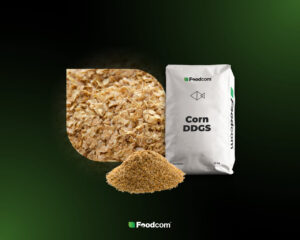- Sorghum is a popular forage crop in drought-prone areas.
- The plant could provide a number of benefits if it replaces or supplements the popular corn crop in Europe.
- Farmers in the UK are conducting a pilot study testing the benefits of growing sorghum in Europe.
What is sorghum?
Sorghum is a fodder crop ranked among the top five such crops in the world. Its popularity is high in arid areas, while in Europe sorghum cultivation is not yet strongly spread. Crops such as oats, barley, corn and fodder beets are used as fodder crops. The nutritional value of sorghum is most comparable to corn. Due to climate change involving periods of drought and high temperatures, there is increasing talk of switching from corn to sorghum.
Benefits of growing sorghum may include:
- lower susceptibility to fungal diseases and pests,
- less impact on soil destruction and erosion than corn (due to deeper rooting, which provides better water infiltration and soil carbon production),
- the ability to harvest early (in August, rather than late September/early October as with corn),
- potentially less weed infestation (due to wider canopy and deeper roots),
- greater tolerance not only to drought, but also to moisture and to low nutrient levels – and therefore lower requirements when it comes to fertilizers,
- potential for intercropping with another crop (a 5% yield increase was observed when reseeding with barley).
Investigating potential opportunities for growing sorghum in the UK
Innovative Farmers Group and Cotswold Seeds will conduct a field study examining the viability of sorghum as an alternative forage crop and the potential benefits of growing it. The study will involve 5 organic, organic farms located in the UK – from northern Scotland to southwest England.
The evaluations will include:
- potential increases in soil carbon content,
- drought tolerance, use of inoculations and early harvest,
- number of weeds,
- palatability of cattle feed,
- effect on milk yield of cows,
- effect on yield performance,
- nutrient content of forage.
The group will evaluate the feasibility of using sorghum in the form of silage produced from the whole plant. Each farm will use a different type of crop – intercropping sorghum with triticale, reseeding with white clover, broadcast seeding, strip seeding, and comparing the crop with oats.







